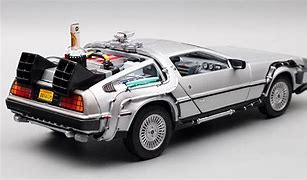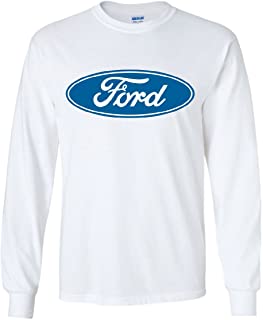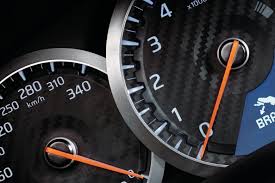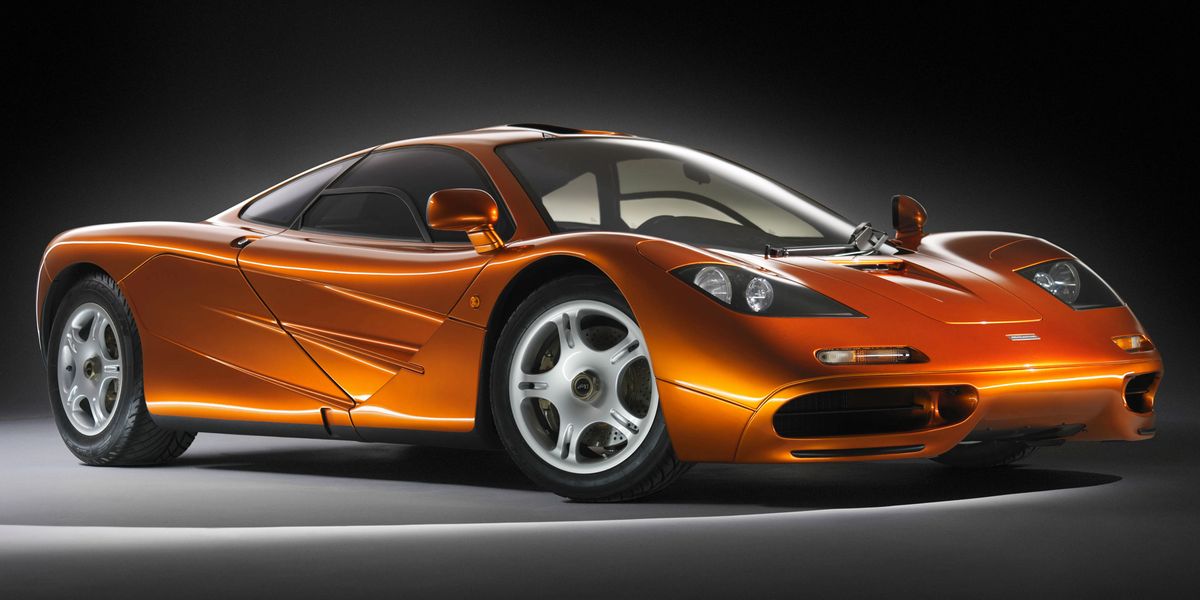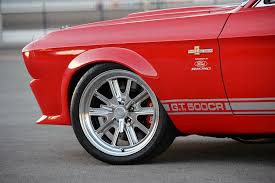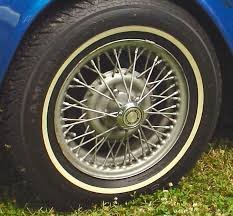

Aston-Martin 2/4 MK II
Engine: Naturally Aspirated Petrol | 2922cc 12v St6
Top Speed: 119 mph
0-60mph: 10.50 seconds
The car manufacturer Volvo has made an important impact on the automotive world. In this article we will give a brief but detailed history of the Volvo marque. We will look at the origins of Volvo looking at who, why, where and when Volvo was founded. We'll look at the design of the iconic Volvo logo and what are some the more significant Volvo models. We'll take a glance at what racing history the Volvo has and who some of the most important people have been in the history of Volvo over the years.
Volvo, a prominent Swedish car manufacturer, was founded in 1927 with the aim of producing vehicles that prioritized safety, durability, and quality. The company's origins can be traced back to 1915 when Assar Gabrielsson, a sales manager at SKF, and Gustav Larson, an engineer, first met and discussed their shared vision of creating a Swedish car. Their collaboration laid the foundation for what would become Volvo.
In 1924, Gabrielsson and Larson officially registered the Volvo brand as a separate company. However, it wasn't until 1927 that the first Volvo car, the Volvo ÖV 4, rolled off the assembly line. The ÖV 4, commonly known as the "Jakob," was a robust and reliable car that quickly gained popularity in Sweden. Its success paved the way for future Volvo models and established the brand's reputation for quality craftsmanship.
The establishment of Volvo in Gothenburg, Sweden, was strategic due to the city's industrial infrastructure and skilled workforce. Gothenburg offered the necessary resources for Volvo to manufacture cars efficiently and effectively. Furthermore, the proximity to the port of Gothenburg facilitated the export of Volvo vehicles to international markets, contributing to the brand's global expansion.
Volvo's founding principles were deeply rooted in a commitment to safety and societal responsibility. Assar Gabrielsson's vision was to build cars that provided reliable and secure transportation, a notion that was ahead of its time. Volvo's dedication to safety was exemplified in 1944 when the company's CEO, Gunnar Engellau, declared that Volvo's primary objective was to build cars that would not cause any deaths or serious injuries. This pledge to safety became a guiding principle for Volvo, leading to groundbreaking innovations and advancements in vehicle safety.
One of the significant milestones in Volvo's commitment to safety was the introduction of the three-point safety belt in 1959. Volvo's decision to make the patent for the three-point safety belt available to all automakers demonstrated the company's dedication to saving lives and prioritizing public safety over profit. This move set a new standard for automotive safety and solidified Volvo's reputation as an industry leader in safety technology.
In addition to safety, Volvo has also been known for its commitment to environmental sustainability. The company has been at the forefront of developing technologies and vehicles that reduce carbon emissions and promote energy efficiency. Volvo introduced its first hybrid vehicle, the Volvo V60 Plug-in Hybrid, in 2012, showcasing the brand's commitment to eco-friendly mobility. Furthermore, in 2017, Volvo announced its bold vision to become a fully electric car company, setting a goal to have 50% of its global sales be electric vehicles by 2025.
Volvo's emphasis on safety, quality, and sustainability has resonated with customers worldwide. The brand's dedication to developing innovative technologies and its continuous pursuit of excellence have contributed to Volvo's success and longevity in the automotive industry. Today, Volvo continues to produce a diverse range of vehicles that embody the brand's core values and commitment to a safer and more sustainable future.
In summary, Volvo was founded in 1927 with a mission to create safe, durable, and high-quality vehicles. The brand's origins can be traced back to the collaboration between Assar Gabrielsson and Gustav Larson, and their commitment to building a Swedish car. Volvo's headquarters in Gothenburg, Sweden, provided the necessary infrastructure and resources for the company's manufacturing operations and international expansion. From its early days, Volvo has prioritized safety, exemplified by its groundbreaking safety innovations and its commitment to saving lives. The brand has also embraced sustainability, aiming to lead the industry in the shift towards electric mobility. Volvo's legacy is built on its unwavering dedication to safety, quality, and environmental responsibility, making it a respected and trusted name in the automotive world.
The evolution of the Volvo logo has closely paralleled the brand's journey and its commitment to safety, quality, and Scandinavian design. Over the years, the Volvo logo has undergone several modifications while retaining its core elements, symbolizing the brand's values and identity.
The earliest Volvo logo featured a circular design with the Volvo name in the center, encircled by a laurel wreath. This emblem represented strength and victory, reflecting Volvo's ambition to create cars that were durable and reliable. The laurel wreath, a traditional symbol of honor, also conveyed Volvo's commitment to excellence and quality craftsmanship.
In the 1950s, Volvo introduced a more simplified and modern logo, known as the "Iron Mark." This iconic logo featured the brand name "Volvo" in bold lettering, with an arrow extending diagonally from the top-right of the "V." The arrow symbolized Volvo's commitment to progress, innovation, and the pursuit of forward momentum. This logo quickly became synonymous with the brand and represented Volvo's reputation for safety, durability, and cutting-edge design.
Over time, the Volvo logo underwent subtle refinements to enhance its visual appeal while preserving its essential elements. The font and proportions were adjusted, giving the logo a sleeker and more contemporary look. The Iron Mark logo remained a recognizable symbol of Volvo's brand identity and continued to represent the brand's values and heritage.
In recent years, Volvo introduced a refined version of the Iron Mark logo, aligning it with the brand's renewed focus on sustainability and electric mobility. The updated logo features a minimalist design with a cleaner and more minimalist appearance. The arrow motif is retained but is now subtly embedded within the "V" of the Volvo name. This subtle modification represents Volvo's commitment to embrace electric vehicles and sustainable transportation while maintaining its core values of safety and quality.
Throughout its history, the Volvo logo has been a visual representation of the brand's values, heritage, and commitment to excellence. From the laurel wreath symbolizing victory to the iconic Iron Mark representing progress and innovation, the Volvo logo has evolved to reflect the brand's evolution and its embrace of the future. The logo continues to serve as a powerful emblem, symbolizing Volvo's dedication to safety, quality, Scandinavian design, and a sustainable future.
Volvo, a renowned Swedish car manufacturer, has produced numerous significant models throughout its history. From the early years to the present day, Volvo has been known for its commitment to safety, innovation, and Scandinavian design. Let's explore some of the most notable models that have defined Volvo's legacy.
In the 1950s and 1960s, Volvo introduced the Volvo PV444 and PV544, commonly referred to as the "Little Volvo" and the "Amazone" respectively. These compact sedans captured the attention of consumers with their stylish design, reliable performance, and advanced safety features for their time. The PV444 and PV544 marked Volvo's entry into the international market, expanding the brand's global reach and establishing Volvo as a leader in automotive safety.
As the 1970s arrived, Volvo introduced the Volvo 140 Series, a range of mid-size sedans and station wagons. The Volvo 144 and 145 models in this series set new standards for safety, featuring innovations such as crumple zones, three-point seatbelts, and padded dashboards. These advancements solidified Volvo's reputation as a pioneer in automotive safety and helped the brand gain recognition as a leader in passenger protection.
In the 1980s, Volvo introduced the Volvo 700 Series, which included the Volvo 740, 760, and 780 models. These luxury sedans showcased Volvo's commitment to combining safety and refinement. The 700 Series introduced innovative features like anti-lock brakes (ABS), traction control, and advanced suspension systems, further establishing Volvo as a brand that prioritized driver and passenger safety without compromising on comfort and performance.
Continuing into the 1990s and early 2000s, Volvo launched the Volvo 850, a groundbreaking model that featured numerous technological advancements. The Volvo 850 was notable for introducing front-wheel drive, which enhanced traction and handling. It also offered a range of engine options, including a five-cylinder turbocharged engine that delivered impressive performance. The 850's design was both functional and stylish, and it became a popular choice among families and performance enthusiasts alike.
Another significant model from Volvo's history is the Volvo XC90, which made its debut in 2002. The XC90 was Volvo's first-ever SUV and quickly became a benchmark for safety, luxury, and versatility in the segment. With its elegant Scandinavian design, innovative safety features, and spacious interior, the XC90 appealed to drivers seeking a premium SUV that offered a blend of comfort, performance, and advanced safety technologies.
In recent years, Volvo has embraced electric mobility with the introduction of the Volvo XC40 Recharge, the brand's first fully electric vehicle. The XC40 Recharge combines Volvo's renowned safety features with the benefits of electric propulsion, delivering a zero-emission driving experience without compromising on performance or style. The XC40 Recharge represents Volvo's commitment to sustainability and its vision for a future of electric mobility.
These are just a few examples of the significant models that have defined Volvo's history and reputation. Each model showcases Volvo's unwavering commitment to safety, innovative engineering, and Scandinavian design. As Volvo continues to evolve, it remains dedicated to creating vehicles that prioritize the well-being of drivers, passengers, and the environment, ensuring that every Volvo model lives up to the brand's legacy of excellence.
Throughout its history, Volvo has been shaped by numerous individuals whose contributions have played a significant role in the brand's success and innovation. These visionary leaders, engineers, and designers have left a lasting impact on Volvo's legacy, helping to establish it as a respected and influential name in the automotive industry.
One of the key figures in Volvo's history is Assar Gabrielsson, one of the company's co-founders. Gabrielsson's passion for cars and his entrepreneurial spirit were instrumental in establishing Volvo as a distinct Swedish car manufacturer. His vision and determination set the foundation for Volvo's core values, including a commitment to safety, quality, and innovation. Gabrielsson's unwavering dedication to these principles guided Volvo's development and helped shape the brand's identity.
Another influential individual in Volvo's history is Jan Wilsgaard, a renowned automotive designer who worked for Volvo for over four decades. Wilsgaard played a crucial role in shaping Volvo's design language, creating vehicles that combined functionality, elegance, and a distinct Scandinavian aesthetic. His notable designs include the Volvo Amazon, the Volvo 140 Series, and the Volvo 240, all of which became iconic Volvo models recognized for their timeless design and practicality.
In the realm of automotive safety, one cannot overlook the contributions of Nils Bohlin, an engineer who revolutionized safety belt technology. Bohlin's invention of the three-point safety belt, which he introduced in Volvo cars in 1959, is considered one of the most significant advancements in automotive safety. His innovative design became a standard feature in Volvo vehicles and set a new benchmark for occupant protection. Bohlin's dedication to saving lives and reducing injuries has left an indelible mark on the automotive industry as a whole.
Furthermore, Göran Fredriksson, Volvo's former Chief Safety Engineer, made substantial contributions to Volvo's commitment to safety. Fredriksson played a vital role in the development and implementation of advanced safety systems, including Volvo's renowned Side Impact Protection System (SIPS) and the Whiplash Protection System (WHIPS). His work focused on studying real-world accident data to improve vehicle safety and develop new safety technologies. Fredriksson's dedication to protecting occupants and his forward-thinking approach to safety engineering solidified Volvo's reputation as an industry leader in automotive safety.
More recently, Håkan Samuelsson has made a significant impact as the CEO of Volvo Cars. Under his leadership, Volvo has undergone a transformative period of growth and repositioning. Samuelsson has been instrumental in shaping Volvo's strategic direction, placing a strong emphasis on electrification, sustainability, and autonomous driving. His visionary approach has driven Volvo's commitment to becoming a leader in the electrification of the automotive industry, with ambitious plans to electrify its entire vehicle lineup and reduce its carbon footprint.
These are just a few examples of the many remarkable individuals who have shaped Volvo's history. Their dedication to safety, innovation, and design has helped Volvo establish its reputation for producing high-quality, reliable vehicles that prioritize the well-being of drivers and passengers. The contributions of these significant individuals have played a pivotal role in Volvo's success and continue to inspire the brand as it moves forward into the future.
While Volvo is predominantly known for its commitment to safety and practicality, the brand has also made notable forays into the world of motorsport. Though not as prolific in racing as some other manufacturers, Volvo has had its fair share of successes and memorable moments in various racing disciplines.
One of Volvo's most memorable racing ventures came in the form of the British Touring Car Championship (BTCC). In the 1990s, Volvo entered the BTCC with the Volvo 850 Estate, a bold move that raised eyebrows due to the car's unconventional body style for racing. However, the 850 Estate quickly made its mark, demonstrating the capabilities of Volvo's engineering and performance. In 1994, Volvo's racing efforts paid off as the 850 Estate claimed the BTCC title, making it the first estate car to achieve such a feat in the championship's history.
Volvo's racing endeavors extended beyond touring cars and into the world of endurance racing. In the 1990s, Volvo participated in the 24 Hours of Le Mans, one of the most prestigious endurance races in motorsport. Volvo entered the competition with the Volvo 960, a high-performance sedan specially modified for endurance racing. While not achieving overall victory, the Volvo 960 demonstrated its reliability and durability by completing the demanding 24-hour race.
In recent years, Volvo has also embraced the growing popularity of electric motorsport. In 2020, Volvo announced its participation in the Extreme E championship, an all-electric off-road racing series that showcases electric vehicle technology in challenging environments. Volvo formed a strategic partnership with the renowned motorsport team Cyan Racing to develop an electric race car based on the Volvo XC40 Recharge model. The collaboration aims to demonstrate the performance and sustainability of electric powertrains while promoting the adoption of electric vehicles.
Additionally, Volvo has a rich heritage in Scandinavian motorsport. The brand has been involved in the Swedish Touring Car Championship (STCC), where Volvo models have competed against other manufacturers on various circuits in Sweden. Volvo has had notable successes in the STCC, with multiple drivers winning championships in Volvo cars. The STCC involvement serves as a testament to Volvo's commitment to showcasing its vehicles' performance capabilities in a competitive racing environment.
While Volvo's racing history may not be as extensive as some other manufacturers, the brand's involvement in various racing disciplines underscores its dedication to performance and innovation. Volvo's forays into touring car championships, endurance racing, and electric motorsport have allowed the brand to showcase its engineering prowess and demonstrate that safety and excitement are not mutually exclusive. These racing endeavors have not only brought Volvo success on the track but also contributed to the continuous development of their road cars, ensuring that Volvo vehicles offer both safety and exhilaration for drivers around the world.
at the beginning of each paragraph, end each paragraph with
and do not mention the length of the essay. Write it as a continuation of a previous section without the need for an introduction of the manufacturer
Aston-Martin 2/4 MK II
Engine: Naturally Aspirated Petrol | 2922cc 12v St6
Top Speed: 119 mph
0-60mph: 10.50 seconds

